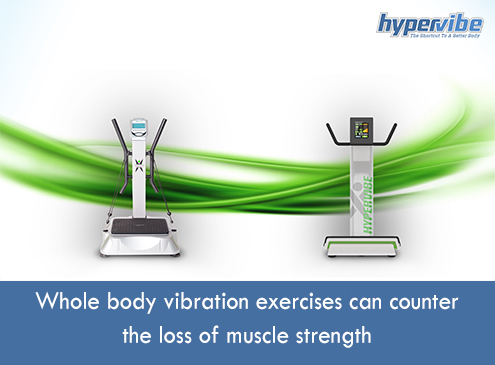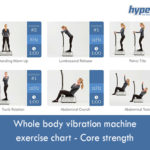
Dynapenia is the term used for defining the loss of muscle strength associated with aging, which is not caused by neurologic or muscular diseases. It is different from sarcopenia, which is defined as a degenerative loss of muscle mass quality and strength caused by aging, and is a component of the frailty syndrome.
Recent studies on aging suggest that dynapenia is highly associated with physical disability and mortality, and that sarcopenia may be a secondary effect of this condition. Dynapenia is characterized by alterations in muscle quantity, neural activation and contractile quality. Maintaining the health of muscles is essential for regulating other body functions, among which the metabolism and motor function, and for this reason committing to a muscle-strengthening training program is a necessity for aging healthily.
In previous articles, we showed that whole body vibration exercises can prevent the loss of muscle mass and help in improving body composition, this form of physical activity being recommended to older adults with sarcopenia. Today we’ll take a look at another study published recently in the European review of aging and physical activity journal, which discusses the effectiveness of vibrating platform exercises in countering dynapenia or the loss of muscle strength.
A team of researchers from the University of Applied Sciences, Discipline Physiotherapy, Bern, Switzerland, carried out an extensive literature search in 2014 and 2015, investigating the studies and randomized controlled trials from a large number of scientific journals among which PubMed, the Cochrane Central Register of Controlled Trials and the International Clinical Trials Registry Platform from the World Health Organization.
The parameters of interest included the isometric maximum voluntary contraction, the dynamic strength and power, as well as the functional strength after WBV interventions in elderly individuals. The vibration machine settings used in the 38 studies included in this investigation were 25-40Hz frequency and 2-4 mm amplitude for vertical WBV platforms and 2.5-35 Hz frequency and 0.05-12 mm amplitude for side-alternating WBV machines.
The results showed beneficial effects of whole body vibration in the vibration groups compared to the non-training groups and conventional strength training groups, suggesting that this form of physical activity can be used for strengthening and maintaining muscles in participants not able to perform classical exercises.
Dynapenia, which is not caused by muscular or neurologic diseases, can limit one’s ability to perform daily tasks such as climbing stairs, running or transporting heavier objects, and can lower one’s quality of life. Whole body vibration used in combination or as a replacement for conventional strength training can reduce the loss of muscle strength and mass, making it easier for elderly persons with a poor fitness level to perform such tasks.
The strengthening of muscles and the prevention of muscle mass loss aren’t the only positive effects of whole body vibration in the elderly. This type of training can be used for a wide variety of health and fitness goals, being safe and recommended to people of all ages.
If you’re not familiar with WBV yet, take a look at our previous articles to learn about this amazing form of physical activity and its health effects.
In the video below, Gabriel Ettenson from Hypervibe USA explains how whole body vibration works, and where all these positive health effects come from. Take a look and if you have questions regarding the Hypervibe vibration platforms feel free to post them below.

Updated on: 08.09.2021 The lymphatic system is involved not only...

Stress can make you gain weight – we’ve heard this...

Various theories exist to answer this question. As you will...

Our series of whole body vibration machine exercise articles continues...

Both rebounding and jumping on a trampoline are excellent ways...